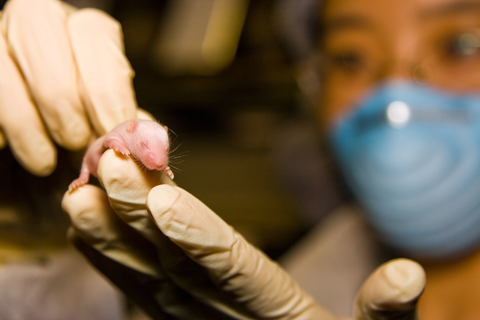Cancer pen could tell scientists where to cut in seconds

New Scientist has reported that a pen-sized device could soon help cancer surgeons tell whether the tissue they plan to cut out of someone is cancerous or healthy.
It usually takes several days for pathologists to analyse a tissue sample to decide if it’s cancerous. But the new device, which gives instant feedback, could be used by surgeons to make sure they cut out the whole tumour, preventing relapses caused by missed tissue. The device has a disposable nozzle on its tip. When placed on suspected tissue, a tiny drop of water on the nozzle soaks up biological material, such as fats, proteins and sugars, from the tissue surface. These samples can then be transferred to a mass spectrometer, which compares the combination of biomolecules with a database of similar data. Algorithms can produce a conclusion on whether the tissue is likely to be safe or cancerous within ten seconds.
“It gave the right answer 96 per cent of the time” said Livia Eberlin, of the University of Texas, whose team has tested their pen on two hundred and fifty three human tissue samples. These samples included cancerous cells from lungs, ovaries, thyroids and breasts, as well as healthy tissue. The team have also used to pen to guide tumour removal surgeries in mice, and hope to test it in hospitals next year. Livia Eberlin said “The speed and accuracy of our device could really help on treatment options and decisions.” She said around 10% of relapses result from the re-growth of tissue missed during surgery.
Nicola Valeri, a cancer surgeon at the Royal Marsden NHS Trust in London, said “Once this pre-clinical data has been validated in clinical trials, the pen-size mass spectrometry might improve diagnosis during operations, and help identify micro-metastatic cancer deposits.” He said this could lead to more precise operations to remove various types of cancer.
The findings are published in Science Translational Medicine.








